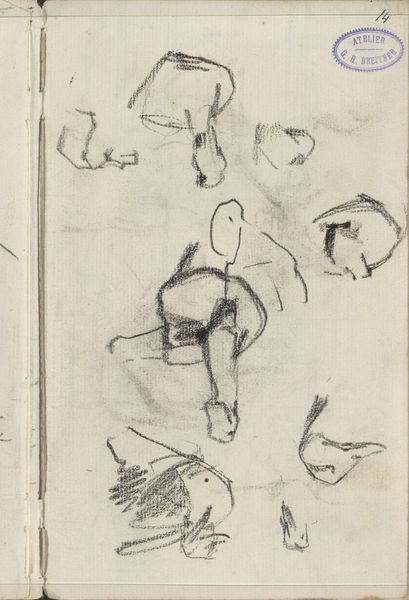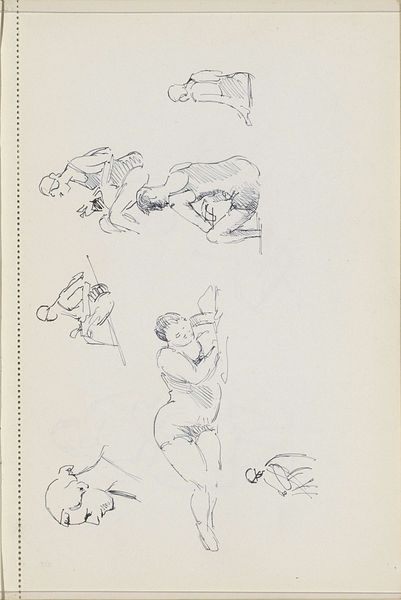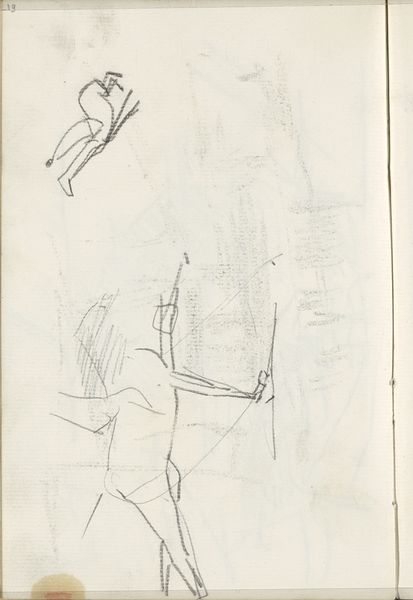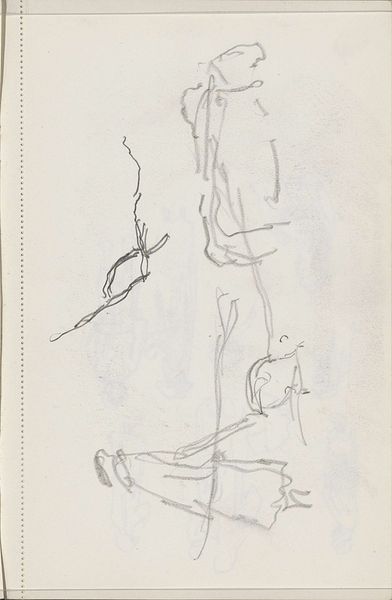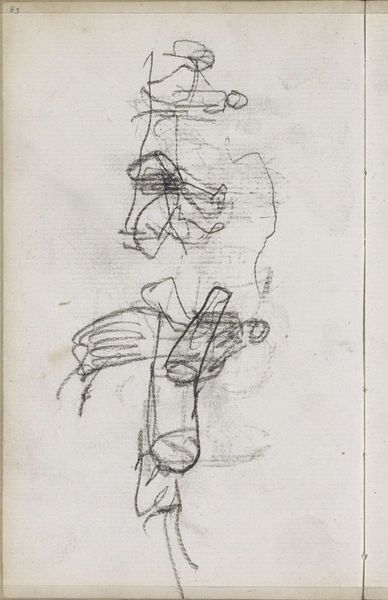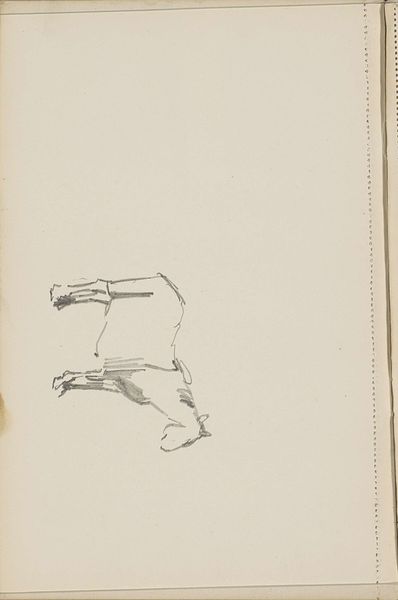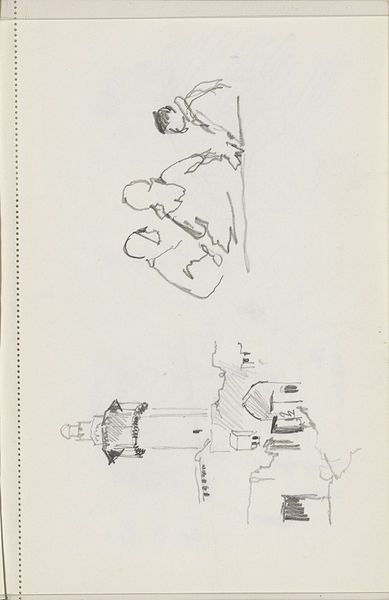
drawing, paper, ink
#
drawing
#
amateur sketch
#
thin stroke sketch
#
quirky sketch
#
incomplete sketchy
#
figuration
#
paper
#
personal sketchbook
#
ink
#
idea generation sketch
#
sketchwork
#
pen-ink sketch
#
line
#
sketchbook drawing
#
genre-painting
#
initial sketch
Copyright: Rijks Museum: Open Domain
Editor: Here we have Cornelis Vreedenburgh’s "Man in oosters kostuum op een ezel," from around 1936. It’s an ink drawing on paper, and it looks like it comes from a sketchbook. The sketch feels lighthearted and whimsical. What sort of visual narrative do you think it’s trying to tell? Curator: I’m intrigued by how seemingly casual marks can conjure such culturally loaded figures. The "Oosters kostuum," or oriental costume, immediately transports us to a time of European fascination with the East, a landscape often constructed more from fantasy than reality. This Orientalism becomes a symbolic backdrop. Editor: So, the East is like a symbol for fantasy or… escape? Curator: Precisely! The East was a screen onto which Western artists projected desires and anxieties. This sketch, though quickly rendered, partakes in that visual history. Notice how the donkey, a traditional symbol of humility or even foolishness, complicates the exoticism. Does the pairing undermine or reinforce stereotypes? Editor: That's interesting; I hadn't considered the donkey as part of the symbolism. Curator: These symbols—the East, the donkey—they act almost like dream fragments, each holding a cluster of associations, cultural memories and perhaps even personal ones for the artist. What feelings are stirred in you by this piece? Editor: I find myself questioning the artist's intentions. Was Vreedenburgh celebrating diversity or falling into caricature? The sketchiness makes it hard to pin down. Curator: Indeed! And that ambiguity is its power. It reflects how cultural symbols are rarely fixed, their meanings always in flux, negotiated between artist, image, and viewer. Editor: I see what you mean! It seems a simple sketch opens up a complex conversation about cultural perception. Curator: Precisely, and understanding these visual cues allows us to appreciate art not just as aesthetic objects but as windows into cultural memory.
Comments
No comments
Be the first to comment and join the conversation on the ultimate creative platform.

